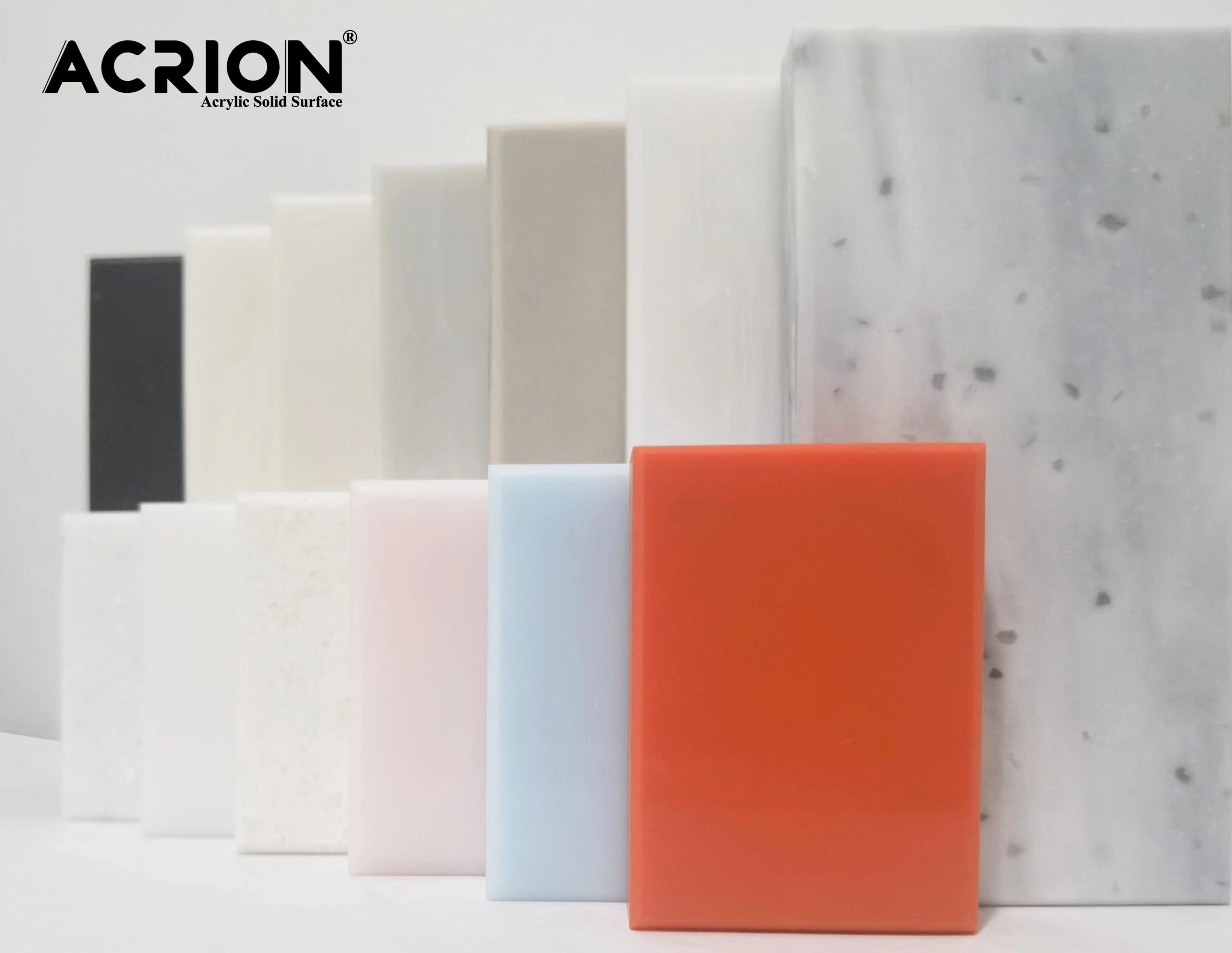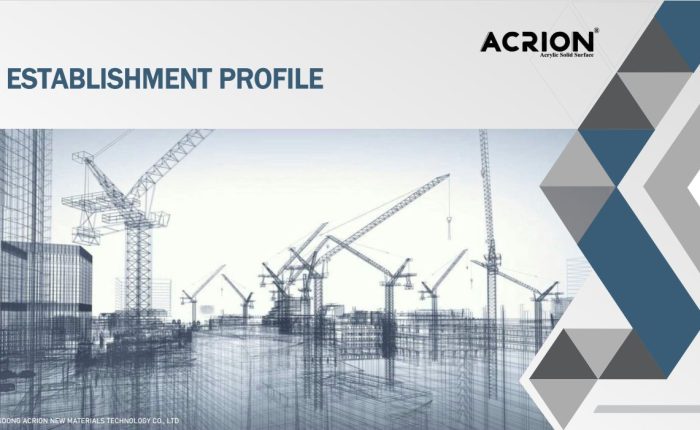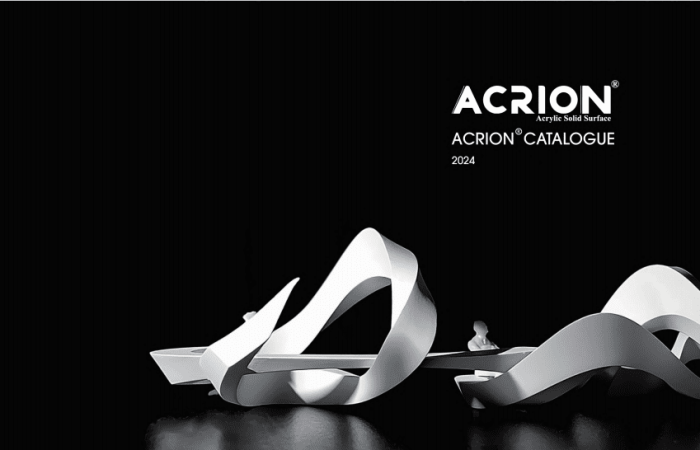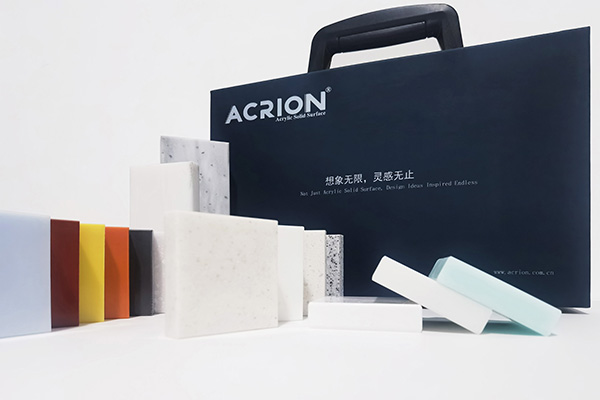アクリル固体表面の柔軟性と可塑性の分析
アクリル酸の固体表面の柔軟性と可塑性は、樹脂の分子構造、硬化メカニズム、および外部条件によって共同で影響を受けます。次の分析は、3つの次元から行われます。材料特性、影響要因、およびアプリケーションシナリオ:
まず、柔軟性のソースと症状
分子鎖の柔軟性
アクリル樹脂の柔軟性は、主にメインチェーンのエステル基(-COO-)とアルキル基(-R)の構造に依存します。たとえば、長鎖アルキル基(C8-C12など)の導入により、分子鎖の遊離体積が増加し、ガラス遷移温度(TG)を下げ、それにより柔軟性が向上します。柔軟なモノマー(アクリル酸ブチルなど)がメインチェーンに導入されると、コーティングは割れずに室温で180°曲げに耐えることができます。ただし、ハードモノマー(メチルメタクリレートなど)の割合が高すぎると、コーティングの脆性が大幅に増加します。
架橋密度の影響
架橋剤(ジイソシアネートやエポキシ樹脂など)の投与量は、柔軟性に直接影響します。たとえば、架橋密度が高すぎると、曲げテスト中のストレス集中のためにコーティングが壊れる場合があります。中程度の架橋(30〜50%の架橋程度など)は、硬度と柔軟性のバランスをとることができ、耐衝撃性を発揮しながらコーティングが特定の硬度を維持できるようにします。
温度依存
アクリルコーティングの柔軟性は、温度の上昇とともに増加します。たとえば、-20℃では、コーティングが脆性骨折を示す場合があります。 60℃では、休憩時の伸びは2〜3回増加する可能性があります。この特性には、低温環境で使用する場合、柔軟性を維持するためにフォーミュラを最適化する必要がある(可塑剤の追加など)が必要です。
第二に、可塑性の実現メカニズム
熱可塑性処理
不完全に硬化したアクリル樹脂は、熱可塑性処理を通じて可塑性を達成できます。たとえば、120-150℃では、樹脂はカレンダー、ブロー成形または注入型を販売し、冷却後にその形状を保持できます。この特性は、複雑な形の製品(不規則な形の装飾部品など)の製造に適用できますが、熱分解を避けるために処理温度を制御する必要があります。
溶媒支援型
樹脂の粘度は、揮発性溶媒(酢酸エチルなど)を添加することにより、その可塑性を低下させることができます。たとえば、溶媒含有量が20〜30%の場合、樹脂を薄層にコーティングまたは噴霧することができ、溶媒が蒸発した後に密なコーティングが形成されます。この方法は、大規模な構造(建物の外壁など)に適用できますが、コーティングの平坦性に対する溶媒蒸発速度の影響に注意を払う必要があります。
軽い硬化と可逆的な架橋
いくつかのアクリル樹脂は光検証因子によって光留められますが、可塑性を高めるために、可逆的な架橋結合(ジスルフィド結合や水素結合など)が導入されます。たとえば、紫外線光照射の下では、樹脂を硬化させて数秒以内に形成することができます。加熱または特定の溶媒の影響下で、架橋結合が壊れて二次形状を達成することができます。この機能は、繰り返し処理(3D印刷など)を必要とするシナリオに適用できます。
第三に、柔軟性と可塑性に影響を与える重要な要因
樹脂モノマーの組成
ソフトモノマー(アクリール酸エチル酸エチル酸エチル酸エチル酸エチル酸エチル酸エチル酸エチル酸塩など)とハードモノマー(メチルメタクリレートやスチレンなど)の比は、柔軟性に直接影響します。たとえば、ソフトモノマーの割合が60%を超えると、コーティングの柔軟性が大幅に改善されますが、硬度は不十分である可能性があります。ハードモノマーの割合が高すぎると、コーティングは割れやすくなります。
可塑剤と修飾子
可塑剤(フタル酸ジオクチルなど)は、分子間力を減らし、柔軟性を高めることができます。たとえば、5〜10%の可塑剤を追加すると、コーティングの破損時の伸長が50%以上増加する可能性がありますが、耐熱性と耐薬品性を低下させる可能性があります。さらに、ナノフィラー(シリカやカーボンナノチューブなど)の導入は、物理的な架橋により柔軟性と強度を高めることができます。
硬化条件
硬化温度と時間は、柔軟性と可塑性に大きな影響を与えます。たとえば、低温硬化(40°など)が不完全な架橋につながる可能性があり、柔軟性が良好であるが硬さが不十分なコーティングが生じる可能性があります。高温硬化(120°など)は、架橋反応を加速し、硬度を高めますが、柔軟性を低下させる可能性があります。さらに、UV-Curableコーティングの柔軟性は、光開始剤の濃度と光の強度を調整することで制御できます。
第4に、アプリケーションシナリオの柔軟性と可塑性の要件
建築コーティング
外壁コーティングは、温度変化によって引き起こされる熱膨張と収縮に抵抗するために、ある程度の柔軟性を持つ必要があります。たとえば、昼と夜の間に大きな温度差がある領域では、亀裂を防ぐために、コーティングは10〜15%の休憩で伸びをする必要があります。さらに、可塑性では、コーティングが複雑な基質(レンガの壁や石など)の表面を均等に覆うことができます。
自動車コーティング
車のバンパーなどのコンポーネントは、柔軟で順応性のあるものである必要があります。たとえば、コーティングは、-40から80℃の範囲内で柔軟性を維持する必要があり、同時に剥がれずに小さな影響に耐えることができます。さらに、可塑性では、コーティングが射出成形プロセスに適応し、滑らかな表面を形成することが必要です。
3D印刷材料
紫外線可能なアクリル樹脂は、複雑な構造の印刷を実現するために順応性がある必要があります。たとえば、樹脂は、印刷プロセス中の破損を防ぐためにある程度の柔軟性を維持しながら、紫外線の下で急速に治癒する必要があります。さらに、印刷製品には、使用量に耐えるのに十分な強度が必要です。
第五、柔軟性と可塑性を向上させるための戦略
分子設計
柔軟なセグメントは、共重合または移植の修正を通じて導入されます。たとえば、ポリエーテルセグメント(ポリエチレングリコールメタクリレートなど)をアクリル樹脂に導入すると、耐水性を維持しながら柔軟性を大幅に向上させることができます。
複合変更
アクリル樹脂をエラストマー(ニトリルゴム、ポリウレタンなど)とブレンドします。たとえば、10〜20%のエラストマーを追加すると、透明度を維持しながら、コーティングの衝撃強度を3〜5回増加させることができます。
治療後のプロセス
熱処理または溶媒アニーリングを通じてコーティング構造を最適化します。たとえば、100℃で2時間の熱処理では、コーティングの内部応力が放出され、柔軟性が向上します。溶媒アニーリングは、分子鎖の再配置を促進し、可塑性を高めることができます。



